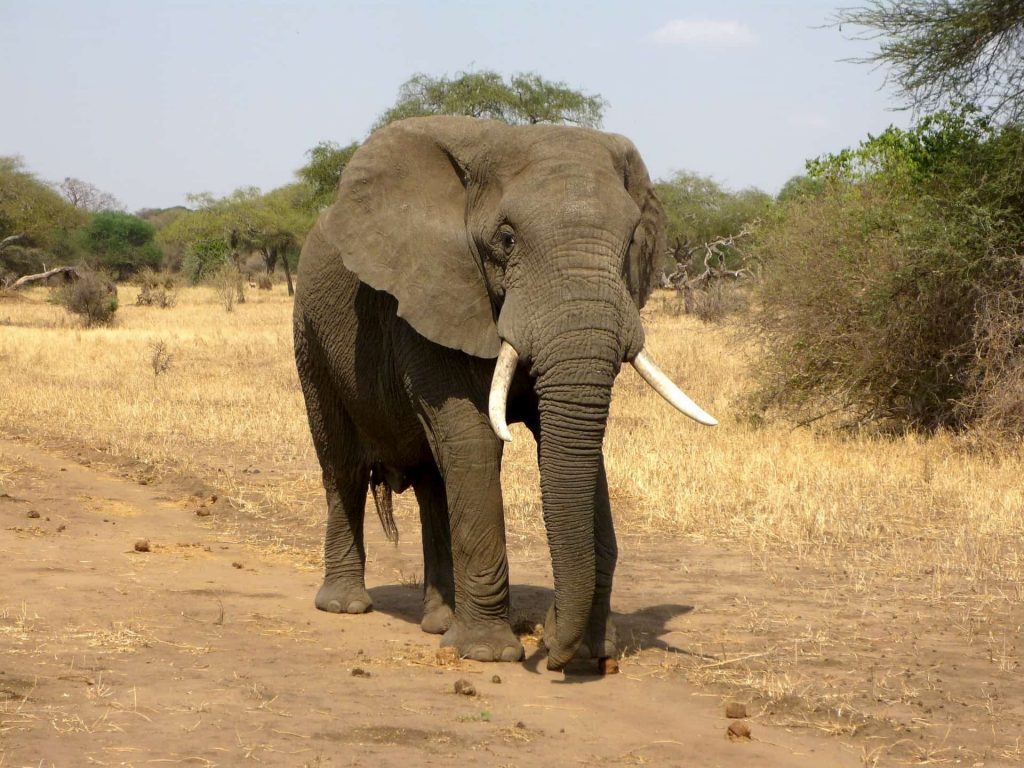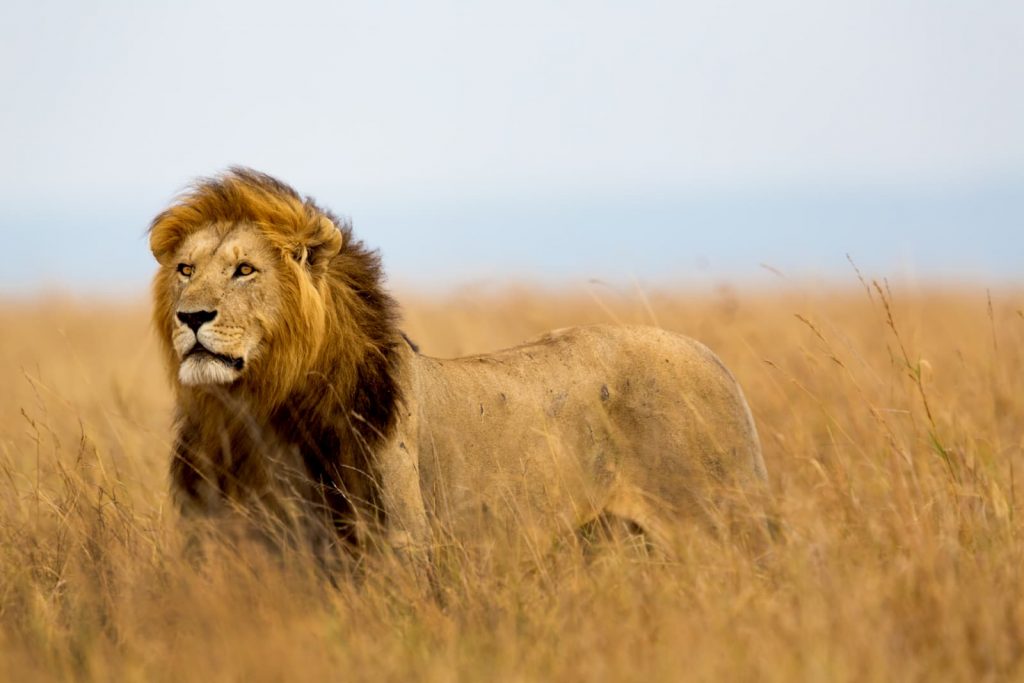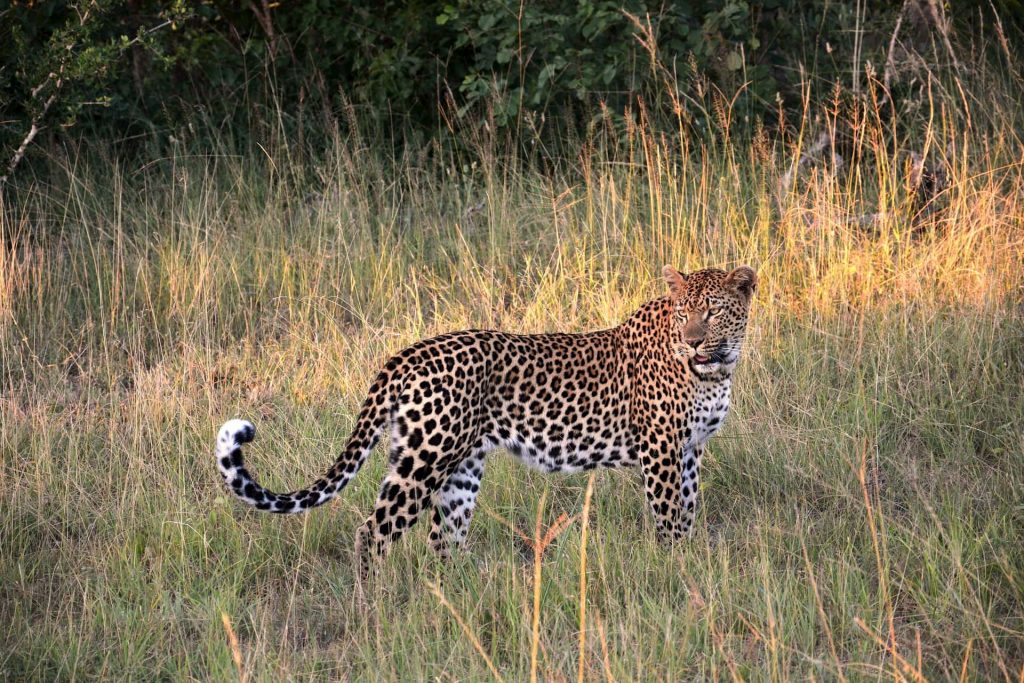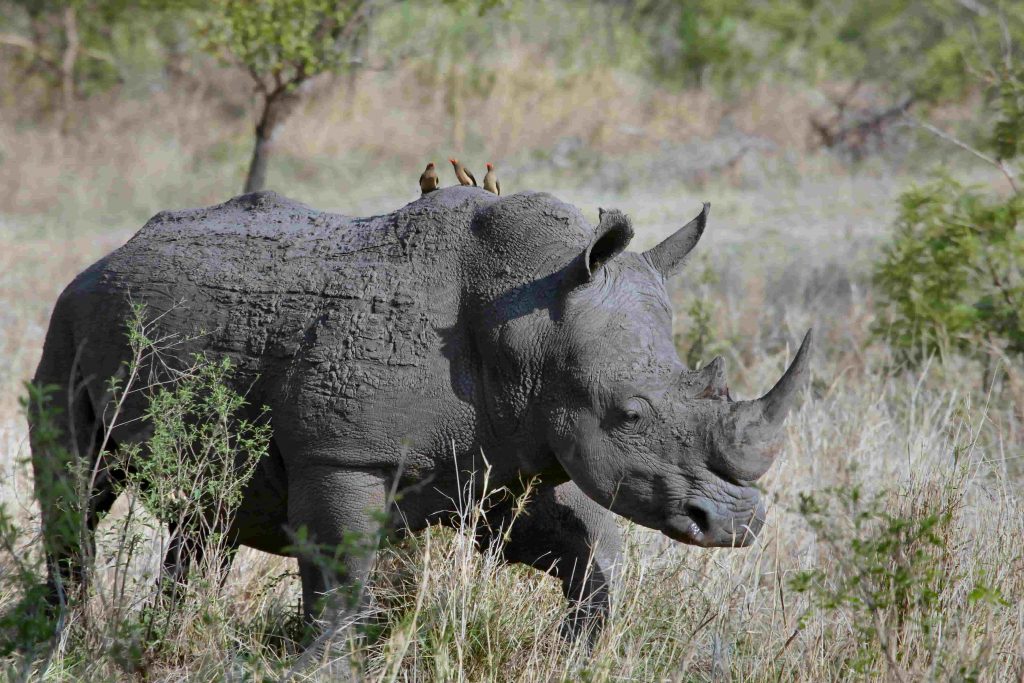Wildlife
The BIG 5
The term “Big 5” was coined in the late 19th and early 20th centuries and refers to the 5 most dangerous animals to hunt on foot in Africa. Thankfully, most of the shooting that goes on now is with cameras, however, hunting does still occur in some areas.
Found in: South Africa, Botswana, Namibia, Zambia, Zimbabwe, Tanzania, Kenya, Malawi, the Democratic Republic of the Congo
African Elephant
Largest land animal, live in herds usually led by the oldest female as their matriarch, adult males live on their own and come around the herds for mating
Did you know?
- Elephants can swim. Yep! They go under water and use their trunk as a snorkel! They also love rolling and splashing around in waterholes.
- A female elephant is pregnant for 22 months! Can you imagine?! That's a lot of pickles and ice cream, or should I say grass, leaves, bark and marula fruit.
- An elephant's trunk has an estimated 150,000 muscles.
- Elephants spend around 16 hours per day eating. An adult elephant can consume up to 70,000 calories per day – and they never have to worry about gaining too much weight! This is because they only digest around 40% of what they intake. The other 60%, well, you know...
Conservation Status: Vulnerable
Threats:
- Poaching
- Trophy hunting
- Human-wildlife conflict

Lion
Lions are at the top of the food chain and for good reason. They’re the dominant (non-human) predator of Africa. They are also the most social of the African cats. Lions live in tightly bonded prides of females and cubs. Adult males live solo or join with other males to hopefully one day take over territory dominated by established males. These established males patrol their territory, as well as protect and mate with the various prides within the territory.
Did you know?
- A lion's roar can be heard up to 5 miles away.
- Lions sleep up to 20 hours per day - must be nice!
- Lions only have about a 30% hunting success rate.
Conservation Status: Vulnerable
According to the African Wildlife Foundation, the lion population has dropped by a staggering 42% in just 2 decades.
Threats:
- Habitat loss – As the human population expands, lions are losing their habitat to housing and farmland.
- Human-wildlife conflict – With humans now living in closer proximity to lions, so does their livestock. This has led to lions killing livestock and farmers retaliating by shooting or poisoning lions.
- Wildlife trade – Lions are killed for their body parts which are used in Asia for unproven medicinal benefits, and they are targets for trophy hunting.
- Exploitation – There are captive lion petting encounters that are offered in Africa where lions are bred for petting interaction with tourists, and then when they grow older, they are used for canned hunting and are shot and killed. There is a growing movement to end wildlife interaction/encounters like this in Africa. Safari Rim does not do business with any lion petting or “walk with lion” operators.

Leopard
Incredibly agile and able to reach speeds of up to 36mph (58km/h), the leopard can be found throughout most of Africa, Asia, India and China. Leopards are remarkably strong and will often drag their kills up trees in an effort to keep them away from any scavenging hyenas or lions that might be in the area waiting for an easy meal. Their spots, which are actually rosettes, are unique as a fingerprint and offer great camouflage while sleeping or moving through the bush.
Did you know?
- Leopards can lift prey that weigh more than its own body weight up a tree!
- Leopards live solitary lives.
- Each leopard's spot pattern is as unique as a fingerprint.
Conservation Status: Near Threatened
Threats:
- Habitat loss – As the human population expands, leopards are losing their habitat to housing and farmland.
- Human-wildlife conflict – With humans now living in closer proximity to leopards, so does their livestock. This has led to leopards preying on livestock and farmers retaliating by shooting or poisoning them.
- Trophy hunting

Rhino
While the majority of black rhinos are found in Namibia, Zimbabwe, and Kenya, the white rhino population is mainly found in South Africa. Contrary to common belief, the difference between the black & white rhinos are the shapes of their upper lips not the color of their skin. Black rhinos have a pointed upper lip that allows them to pluck leaves and fruit from trees & shrubs. Whereas, white rhinos have a squared upper lip allowing them to graze on grasses. Rhinos can run up to 30-40mph despite their large size. You’re better off climbing up a tree than trying to out run one of these speedy guys!
Did you know?
- Adult rhinos have no natural predators, except for man.
- Rhino horns are actually made of keratin - the same as your fingernails and hair.
- Black rhinos are actually gray.
- Rhinos have very poor eyesight.
- 2 species in Africa: Black Rhino & White Rhino – It has nothing to do with their color. Legend has it the name "white" came to be when the English mistakenly thought the Dutch word to describe these rhinos, “wijde” (referring to the wide size of the rhino’s mouth), was the word “white.”
Conservation Status: Critically Endangered
Threats:
- Poaching
- Habitat loss

Buffalo
Found throughout the northern and southern savanna the Cape Buffalo tend to live close to water. It’s not uncommon for cape buffalo to live in herds up to 500 & old males typically live together in “retired” bachelor herds. Ruthless when provoked, the cape buffalo is quicker than it appears. Their extremely thick skull, curved horns & large stature make it unattractive to lone predators attempting to take down a meal.
Did you know?
- Herds will often fight back against predators and come to the rescue of one of their own.
- Buffalo are capable swimmers and often cross deep water in search of better grazing.
- Buffalo have 4 times the strength of an ox! Don't mess with them!
Conservation Status: Least Threatened

